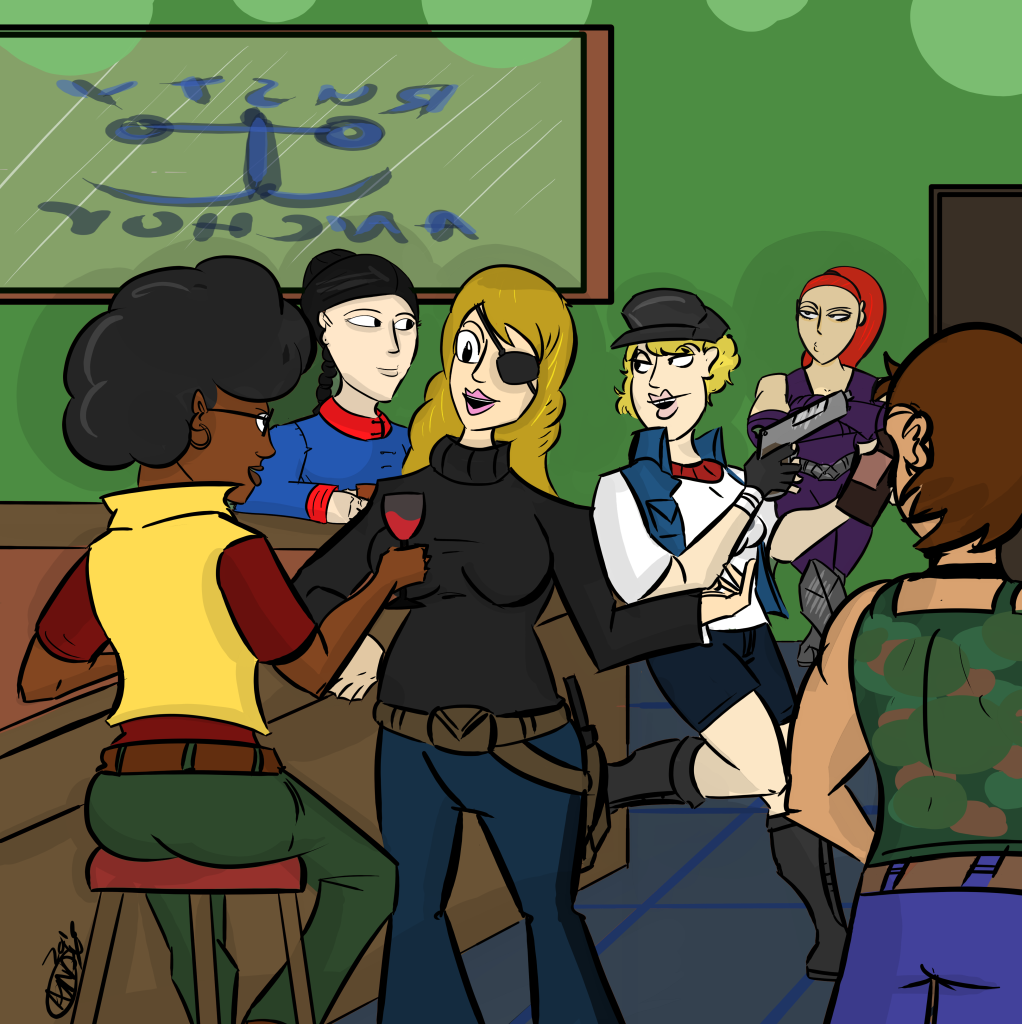
Original art by ANDY VANDERBILT!
Here’s an experiment: Look at the front page of your favorite daily newspaper. Whatever your political disposition, notice how it feels like the world is ending just a little quicker every morning. Online though, we’ve all got our priorities straight. When it comes to the matter of movies, there’s only one issue that’s occupying the greatest minds of this country. They remade GHOSTBUSTERS with an all-female cast! And it’s making money! And it wasn’t half-bad! The sky is falling! Man, if us dudes can solve this one, we’re really getting somewhere in America.
As a cheerful F-you to all those guys, Daily Grindhouse is happy to come together to throw more fuel on the sad, doomed male-rights-activism bonfire, and to ask our contributors…
WHAT’S YOUR FAVORITE FEMALE ENSEMBLE IN MOVIES?
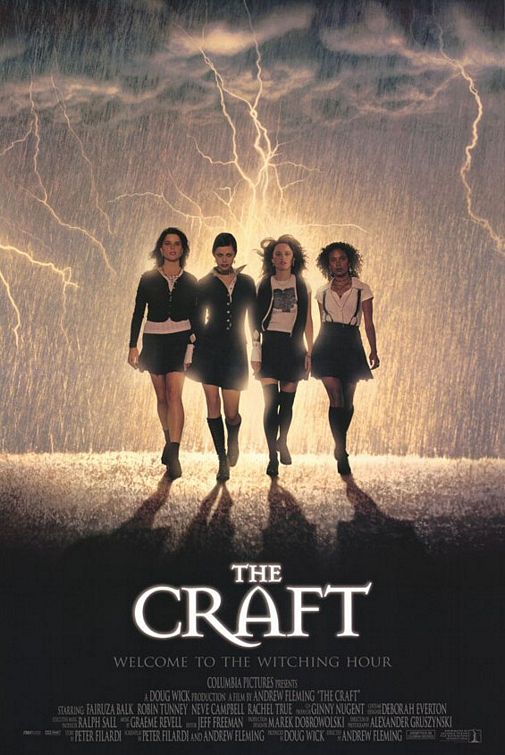
TRISTAN RISK: My immediate thought is THE CRAFT. A film very pivotal in my formative years, I was just the right age to be slightly younger than the cast when it was released. It was the occult MEAN GIRLS, with witchy high school girls discovering their powers to reign down otherworldly adolescent indignation on those who had slighted them. This is probably why it’s just as well that witchy superpowers are not often bestowed on high school girls… it’s because we are terrifying at that age, in terms of mood swings, with our brains trying to figure out the right balance of hormones. It can make us erratic. However, for me, being just slightly younger than the cast when this was released, it was like having big sisters in high school to look up to. The characters showed the gamut of moral compasses that made us decide if the consequences would be worth the actions. Fairuza Balk, a perennial favourite actress of mine, was the personification of who I wanted to be in high school, and gave me escape from my own day-to-day. Not to mention, as well, that the soundtrack is basically a stoner witch mixtape — which I love. All in all a strong cast, a fun film, and one that I still view with fondness.

KATIE RIFE: The late ’60s and early ’70s were a golden age for girl gangs on film. But none had the same flair as the tough-as-nails juvenile delinquents in STRAY CAT ROCK: SEX HUNTER, part of a series of five exploitation films all released between 1970 and 1971. Led by a typically stoic, enigmatic Meiko Kaji, the Alleycats may look like a gaggle of dizzy teenage girls, but that’s just a ploy to lure old perverts into empty parking lots so the gang can shake them down for cash. Their scene is more nighttime knife fights lit only by flashlights, and firebombing the hideouts of misogynist male gangsters who try to fuck with them. (Seriously, they come prepared with Molotov cocktails.) All this, plus a hip early 70s setting featuring Japan’s colorful take on Swinging London psychedelia? It doesn’t get much better than that.
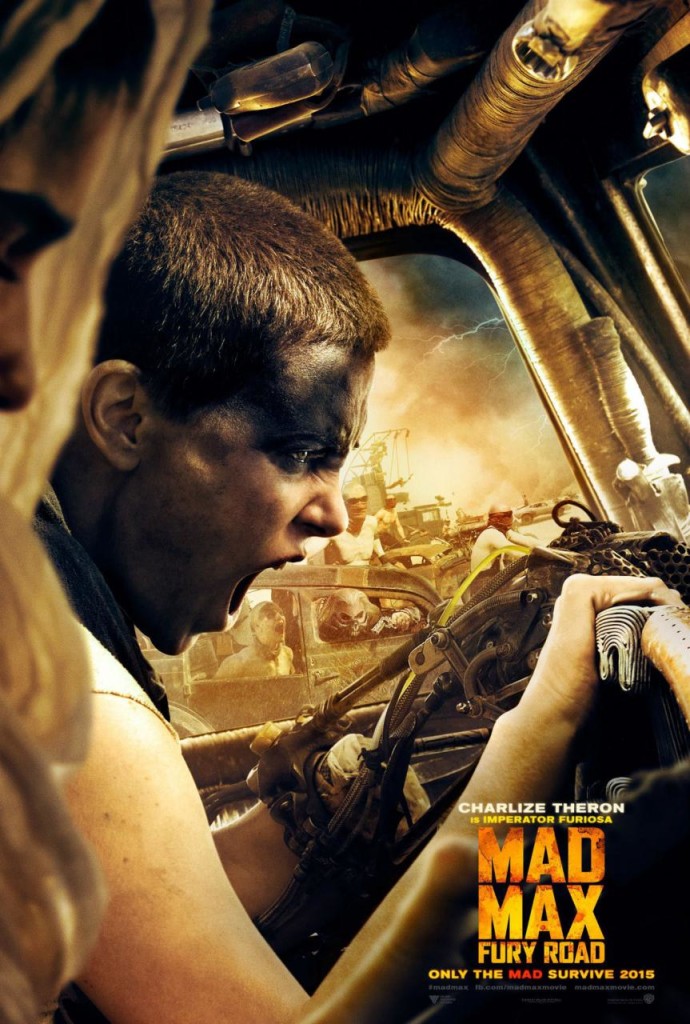
ANDY VANDERBILT: My pick would have to be FURY ROAD. Not only was it a wonderful return to form for a long-dormant franchise that wasn’t a story reboot, but it managed to be a very female-dominated movie without being heavy-handed. Furiosa and the escaping rag-tag group of Immortan Joe’s wives along with the elderly all female wasteland warriors were fantastic characters, even the ones who weren’t spotlighted very much throughout the film. I’d love to see Furiosa come back in her own set of spin-off movies.
Another thing that’s pretty awesome is the fact that it was edited by a woman [Margaret Sixel], who managed to make sense out of such an insane amount of craziness taking place on screen. No small feat.
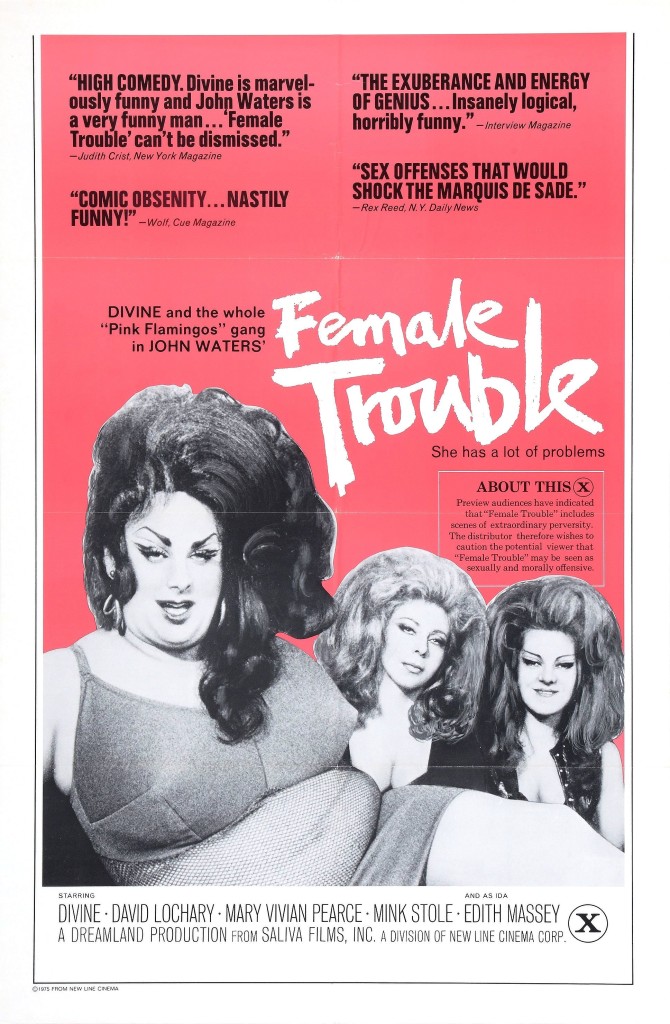
JEREMY LOWE: At ten years old and watching the original HAIRSPRAY, I wasn’t thinking much about the director or anything technical. I only thought it was a weird movie about racial equality and that it was really fun. Two years later, I’m a little older and watch CRY-BABY. Woah, another amazing movie with a quirky feel that I can’t get enough of.
Let’s fast forward a couple years. I’m sixteen, love cult cinema, and am discovering the early works of my now-favorite director, John Waters. My mother threatens to throw out the house for watching FEMALE TROUBLE.
I finished FEMALE TROUBLE one weekend while my parents were out of town, and that same weekend I found DESPERATE LIVING in the same section at the back of the video store. I had never seen anything quite as insane as DESPERATE LIVING.
DESPERATE LIVING is the first time I’d seen a mostly female cast in a movie that was that foul and offensive… and I liked it!
DESPERATE LIVING is John Waters bizarre attempt at a fairy tale and it’s disgustingly beautiful! When a rich housewife, Peggy Gravel (Mink Stole) has her maid Grizelda Brown (Jean Hill) help kill her husband, they are soon on the run and wind up in Montville, a community of homeless people that’s built on a garbage dump.
There is an evil queen, Queen Carlotta (Edith Massey), dirty lesbian sex, and mostly naked male soldiers. I’d never seen so many wagging, hairy, flaccid penises. It’s all so perfect!
DESPERATE LIVING is an amazing exercise in the absurd that revels in its own strange sense of girl power. “Men are such cunts.”
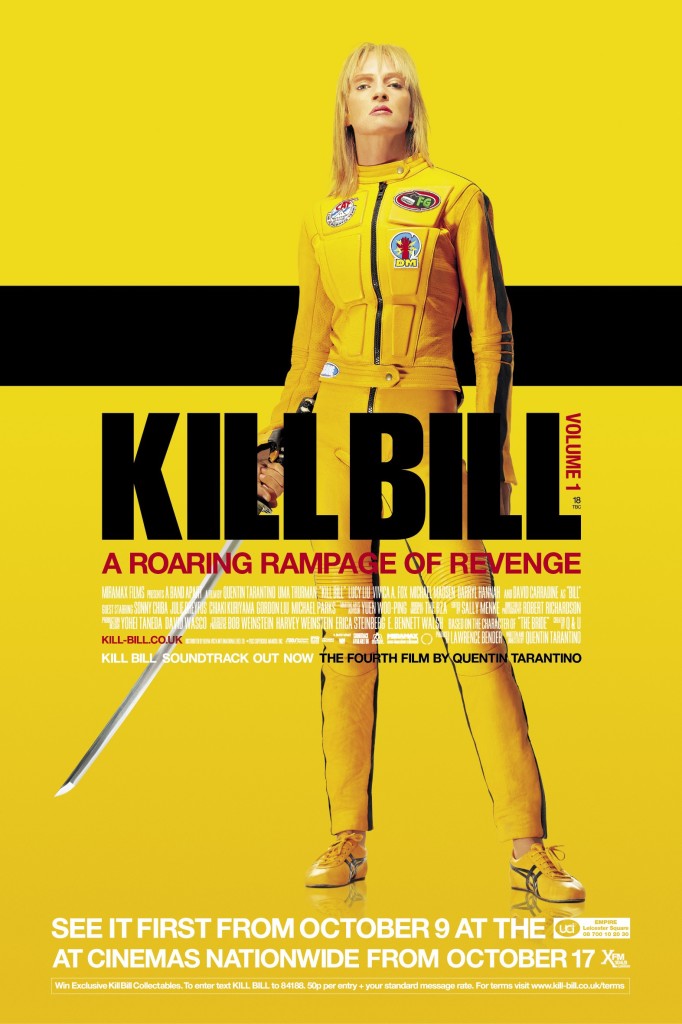
FREEMAN WILLIAMS: There are a bunch of movies “spotlighting a female ensemble” in the realm of action movies, the problem is finding one that’s good enough to edge into “favorite” status. Not the fault of the ladies, either. Concepts like this just seem to draw garbage filmmakers.
My choice is going to be KILL BILL, considered as one long movie, as it was meant to be. Not QT’s best, but a clear favorite of mine, as it seems to be a tender valentine to me and the movies I love.
David Carradine’s deadly harem, including Uma Thurman, Lucy Liu, Daryl Hannah, and Vivica A. Fox (gone too soon! Too soon!) is solid casting for solid characters, even extending to secondaries like Julie Dreyfus and Chiaki Kuriyama. Token male Michael Madsen may be the only one to (temporarily) gain the upper hand over the vengeance-seeking Bride, but every other facet of his non-assassin life is so driven by self-destruction that it instantly, necessarily, stands in stark relief against the success and power of the women.

RYAN CAREY: I’m gonna go with “Death Proof.” Not only is it Tarantino’s most under-appreciated flick, it’s loaded to the gills with badass female characters who give a genuine sleazeball a righteous come-uppance at the end. In a just and sane world, it would have made Zoe Bell, at the very least, a household name. Smart, sexy, sleazy, and above all fun, this has everything you could ask for and then some. A treat not just for exploitation fans, but for movie-lovers in general.
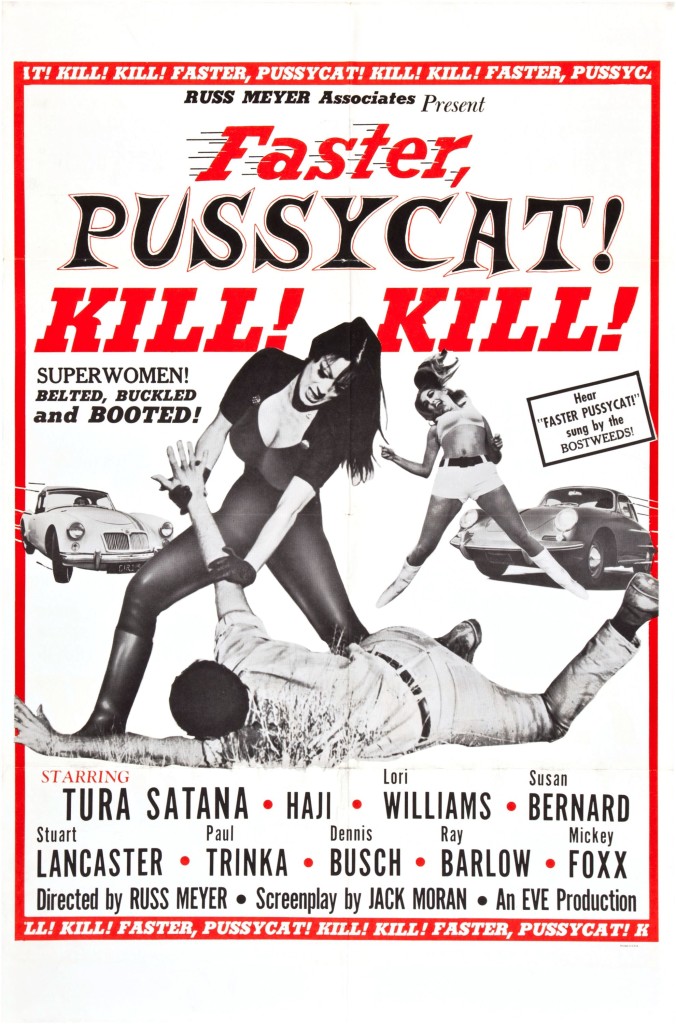
MIA MAYO: FASTER, PUSSYCAT! KILL! KILL!! Whenever I’m feeling kind of blah and not super-confident or bad-assy, I shove it into my VCR and take notes from Varla! Sometimes just go-go dancing in my living room to the theme song is better than coffee! Definitely my favorite girl gang. If only Donut from SWITCHBLADE SISTERS could join their group! Could you imagine?!? Then they would have been unstoppable!

VASHAWN QUINONES: For me, it would have to be F. Gary Gray’s 1996 action-crime classic SET IT OFF. This is the first time I had ever seen four black women in an action movie that dealt with race and gender with force. It’s a perfect marriage of action, comedy, drama and a dash of romance. SET IT OFF proved to me that F. Gary Gray had the chops to handle action films and not get stuck doing just hood comedies. While I thought all the performances from the women were great, the real stand-out performance was Queen Latifah’s character ‘Cleo’; a cornrow-wearing, low-riding lesbian who’s ready to blast at any moment. If you’re a fan of ’90s films like MENACE II SOCIETY or BOYZ N THE HOOD, you’ll definitely want to check this out. That’s if you haven’t seen it already.

DOUG TILLEY: ALL ABOUT EVE has such wonderful dialogue and performances that it’s easy to forget just how beautifully bitter and cynical it is. A slick commentary on our culture’s obsession with youth, particularly in the entertainment industry, it features a tour-de-force performance by Bette Davis as the aging actress Margo Channing. She’s at her very best here, spitting out the exquisitely crafted Joseph L. Mankiewicz dialogue with trademark passion. Sure, there’s a wonderful supporting cast — and Anne Baxter keeps pace as best she can — but this is Davis’ show, and she carries this ferociously entertaining triumph until the (bitter) end.
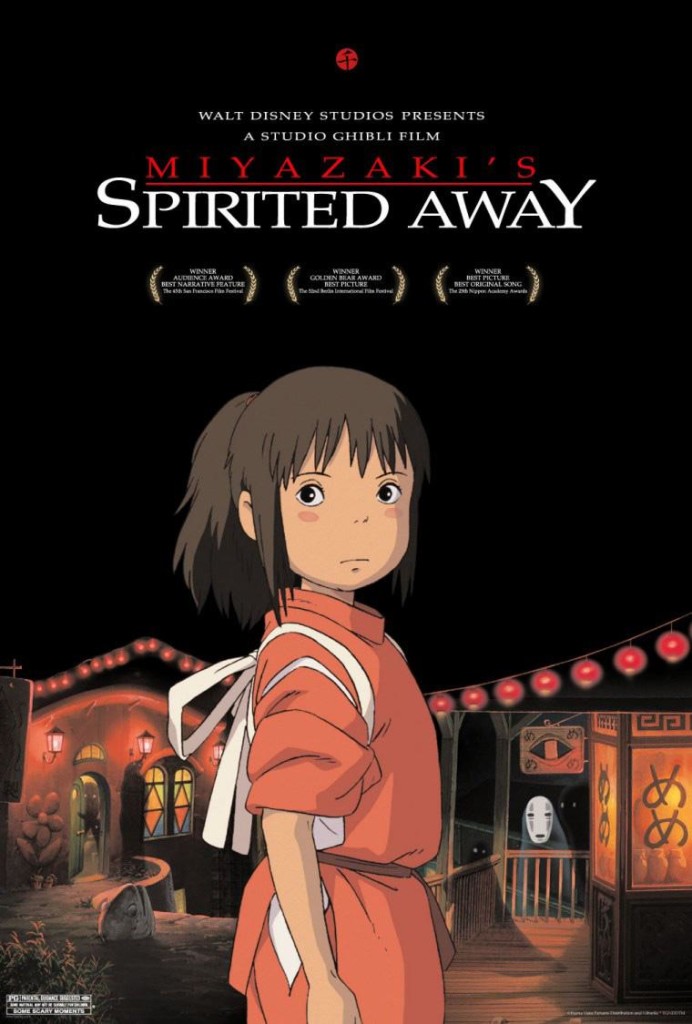
MOE PORNE: I’m gonna take a slightly different approach on this one and say Hayao Miyazaki’s SPIRITED AWAY. It ticks all the right boxes for me. Head to toe charm, Strong female characters, a plucky young lead, and loads of whimsy.

PATRICK SMITH: Although they’re not the focus I have a lot of affection for Alicia Keys’ Georgia Sykes and Taraji P Henson’s Sharice Watters of SMOKIN’ ACES. I know I’m not alone, but I’ve always been under the impression that SMOKIN’ ACES has a lot more going on up top than people give it credit for and director Joe Carnahan shows a mastery at juggling more characters than THE AVENGERS. Out of all of them you get the impression he has a particular affection for Sykes and Watters, who of all the hitmen skulking around Lake Tahoe, they’re the ones who find themselves the deepest in the shit after underestimating the forces surrounding their target, and have one of the more durable emotional arcs of the movie.
There are deep histories peppered throughout the film but Sykes and Watters have the most lived in chemistry. They’ve got war wounds and have come to count on one another in ways most people won’t ever experience, but with that comes a fair amount of baggage. It becomes clear pretty early on that Watters has romantic feelings for Sykes that aren’t reciprocated on Sykes part. So once the bullets start flying and Sykes is presumed dead, Watters reigns down a wave of destruction like a war goddess with a sniper rifle the size of a motorcycle.
Of course Sykes isn’t dead so much as banged up and being swept off her feet by Common’s Sir Ivy, creating one of the more memorable meet-cutes I can think of, and when Watters see’s them in a crowd through her scope you can see relief and heartbreak float across her face right before she’s presumably killed. Makes you wish this story could have played out longer than an accumulated twenty minutes of screen time but its effective and if nothing else it really makes me want a sequel exploring the most lethal love triangle of all time.
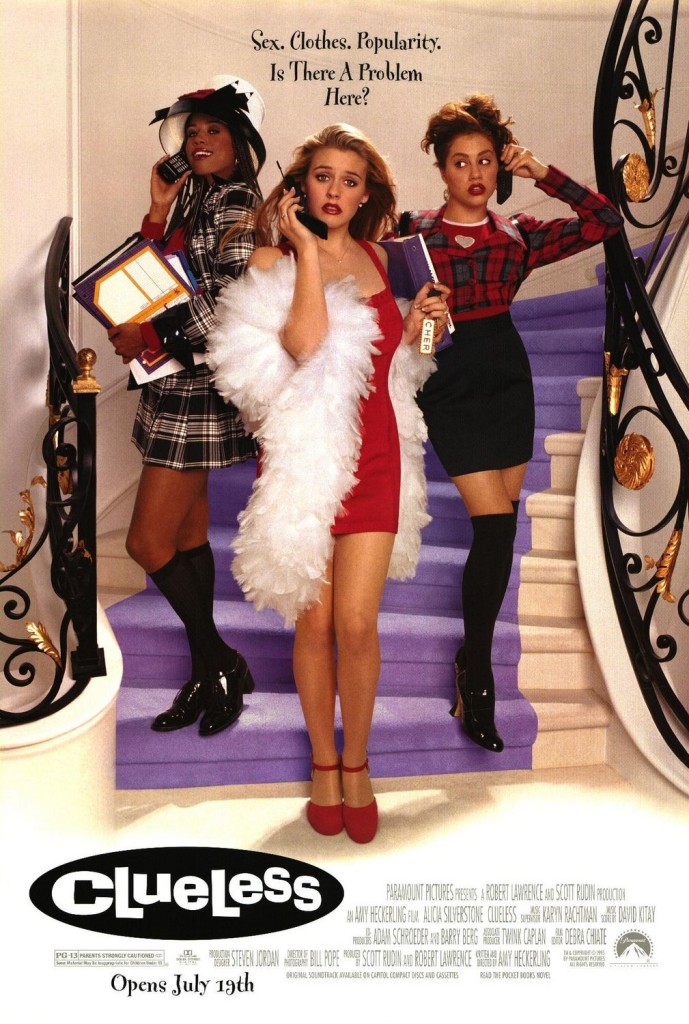
MIKE VANDERBILT: One of my favorite female led films has always been CLUELESS. While she may not have worked out as Batgirl, Alicia Silverstone is a wonder of casting in Amy Heckerling’s very ‘90s take on Jane Austen; there is nobody else that could play the vapid character of Cher Horowitz with the exact right mix of beauty, charm, and comedic timing. The late Brittany Murphy and the now certified bonkers, Stacey Dash, round out the female trio; the film certainly passes the Bechdel test as the three leads generally are talking about themselves. While Clueless may not be as honest as it’s older sibling, FAST TIMES AT RIDGEMONT HIGH, it is sweet, and funny and has one of my favorite safe sex messages from the ‘90s with Cher’s line “You see how picky I am about my shoes and they only go on my feet.” (The appearance of the Mighty Mighty Bosstones is indeed a plus).
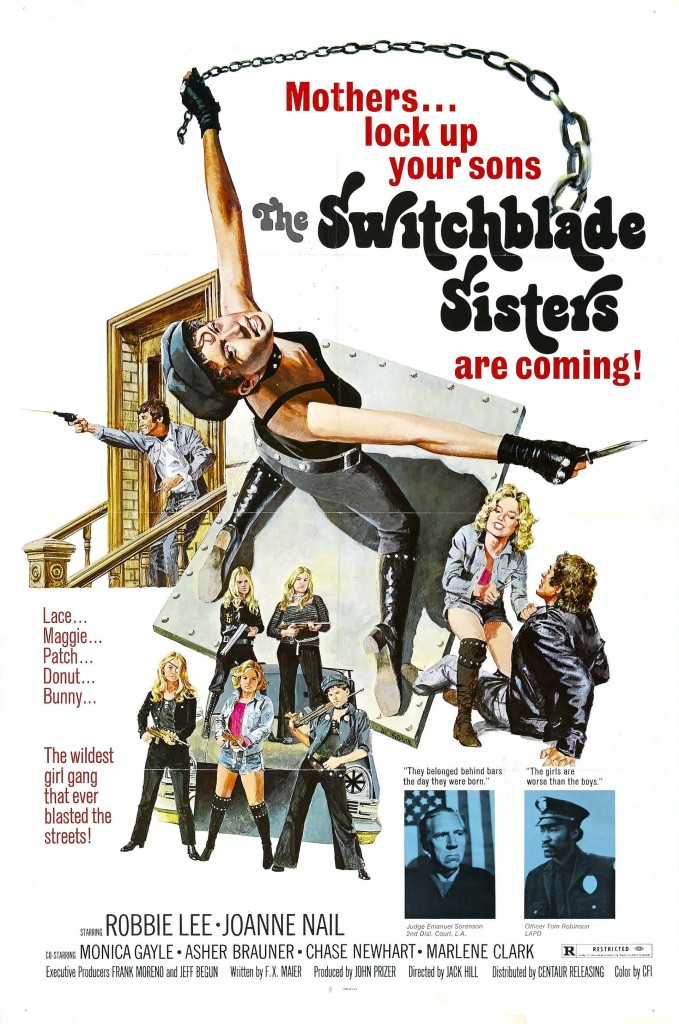
To be a film with a feminist message, the ladies must not just be the heroes, but they can also be a maniacal villain, after all, feminism at its core is about equality. Two of my favorite pieces of exploitation trash are Jack Hill’s SWITCHBLADE SISTERS and Don Edmond’s ILSA, SHE WOLF OF THE SS. It’s hard to pick out a hero in SWITCHBLADE SISTERS aka THE JEZEBELS, as just about everyone in it (boy or girl) are sufficiently nasty. Robbie Lee’s Lace and Monica Gayle’s Patch are terrifically devious delinquents that prove that a girl gang can do anything the boys can do (murder, steal, and cause general mayhem) just as good—if not better than the boys can do…and they can do it in short shorts.
Dyanne Thorne’s Ilsa was billed as “the most dreaded Nazi of them all,” and that’s a tough position to work your way up to. “She committed crimes so terrible, even the SS feared her” announced the film’s poster, and she did it stockings and heels. Thorne plays the role tough as nails, with an oddly tender side that really wants to be loved that you almost feel her betrayal when der Americana pulls the rug out from under her. A truly memorable villain that was on her way to be coming the James Bond of exploitation cinema, even planning to do battle with a Bruce Lee impersonator in “the Devil’s Triangle.”
Yes, positive role models are important, but a young actress should know that she can do anything she wants, even playing the villain.
Also: One of the best films of 2014 unfortunately seems to have been largely forgotten. Billed heavily as the thinking person’s answer to FIFTY SHADES OF GREY, writer/director Peter Strickland’s THE DUKE OF BURGUNDY delves into the sadomasochistic relationship between two entomologists (Sise Babett Knudsen and Chiara D’Anna.) The film revels in the pseudo-artsy style of Jess Franco, with plenty of soft focus and a slightly yellowed tint to the film. The film appears to take place in some sort of alternate universe without men — the entire cast is female — and Victorian fashions are still in style. THE DUKE OF BURGUNDY is almost unbearably erotic without delving into hardcore or soft core smut, but unfortunately falls into the same trap of many films about BDSM, implying that there’s something wrong with a need for kink in general. Even the characters in Fifty Shades are providing an example of SOMEONE’S perversions, even if they’re not yours, someone is into that and that’s ok. That said, THE DUKE OF BURGUNDY gets BDSM about 90% right, revealing that it’s actually the submissive who’s running the show.
MATT WEDGE: Admittedly, I may be straining the definition of female ensemble here, but MULHOLLAND DR. is one of the all-time great films when it comes to detailing the horrors faced by young women who come to Hollywood trying to win the movie star lottery.
Writer/director David Lynch gets to have his cake and eat it too with his look at the way the film industry desperately needs strong women but does its best to devalue them. The film’s fluky production as a TV pilot that did not get picked up to series allows Lynch to initially poke gentle fun at a film industry that only sees young female actors as potential love interests for male actors twice their age. But Lynch has a darker view of the industry on his mind and eventually slides into pure horror territory, taking a talented cast into a hellish Hollywood of predatory actors, producers, and mafia-types who try to profit off beautiful women at the same time that they dehumanize them.
Betty (Naomi Watts) seems like the prototypical starry-eyed wannabe with her “gosh wow” sunny nature. But she also realizes how cheesy the movie and role she is auditioning for is, so she is clearly more than meets the eye. While she is polite and sweet, she is not a pushover. She is capable of turning on the juice in an audition that is far too good for the material and then reverting back to her girl-next-door helpfulness when trying to solve the mystery behind the identity of Rita (Laura Elena Harring).
Rita is a woman who has literally lost herself in Hollywood. Her amnesia is an apt metaphor for the women who are swallowed up by L.A. and the film industry. Through Rita, the film shows how disorienting and impossible the demands of the industry can be on women who are asked to be so many different people at once. If the film industry shown in MULHOLLAND DR. views Betty as a plucky Sandra Bullock-type, it views Rita as a cool bombshell in the mold of Angelina Jolie. The powers-that-be are not interested in women who are layered individuals, they just want “types.”
While what I’ve described of the film and the way it views the film industry sounds horrific, Lynch largely treats the first two acts of the film as light entertainment with occasional bursts of Lynchian weirdness. Watts plays Betty with a mixture of self-aware humor, common decency, and just enough of an underlying naïve attitude to be relatable and smart, but still remain believable when she makes a couple of questionable decisions. But Betty’s early travels through the industry make for largely comedic viewing.
And then the final act kicks in, leaving all comedy behind.
SPOILERS AHEAD. IF YOU HAVE NOT SEEN THE FILM, STOP READING NOW.
The switching of characters is a disorienting trick on the audience, but it is also one of the most brilliant moves of Lynch’s career. Watts turns into Diane, a sort of alternate dimension version of Betty. Instead of the grounded young woman who was capable of handling the sometimes-horrific treatment of Hollywood, Diane is near the bottom of an ugly spiral. Her career has failed and she has had her heart broken by Camilla (Harring). Completely broken, her spiral into madness and suicide is maybe the darkest moment in any of Lynch’s films.
But the horrible ways that Camilla compromises herself are deeply dark and cynical in their own right. Like Rita, Camilla has lost herself, but she has done so willingly. When the film was released in 2001, any whiff of gay rumors could be ruinous for a movie star (some would say they still are, but that’s a debate for a different piece). Camilla not only breaks Diane’s heart by ending their relationship to save her career, she very publicly makes a show of her engagement to a smarmy, wunderkind movie director (Justin Theroux) with Diane present at the party. It is a cruel and contemptible move by Camilla, but one that she feels is necessary to prove her lack of romantic interest in Diane.
The two female leads (ignore the incongruous top-billing for Theroux, he is clearly playing the supporting character) play four different characters between them and knock each performance out of the park. This doubling up of roles could be viewed as simply a gimmick, but it is both an impressive feat of acting and proof of Lynch’s point that the film industry needs strong, capable women. The third act of the film, in addition to twisting the film in on itself through nightmare logic, is a howl of rage at how poorly these women are often treated.
Even looking beyond the very good work of Watts and Harring, the film is stacked with great female performances of characters who tend to be more powerful, more important, and wiser than they are given credit for. Lee Grant has a spooky cameo as a psychic warning Betty and Rita of the danger they are in. Rita Taggart plays a powerful casting director who long ago eclipsed the relevancy of her producer ex-husband with a knowing smile and a blunt manner of stating the truth. Ann Miller plays a kooky elderly landlady who does not let her quirks get in the way of trying to impart some hard-won wisdom to Betty. Each woman seems to be a “type,” but they break out of their molds to show more depth and believable humanity than most leading female roles in Hollywood films.
It is hard to think of a movie that is at once such a celebration of strong women in and around the film industry while also decrying the dehumanizing ways they are often treated. MULHOLLAND DR. is Lynch’s funniest and most horrifying film. It also is his most feminist and remains Harring’s and Watts’ finest moment.
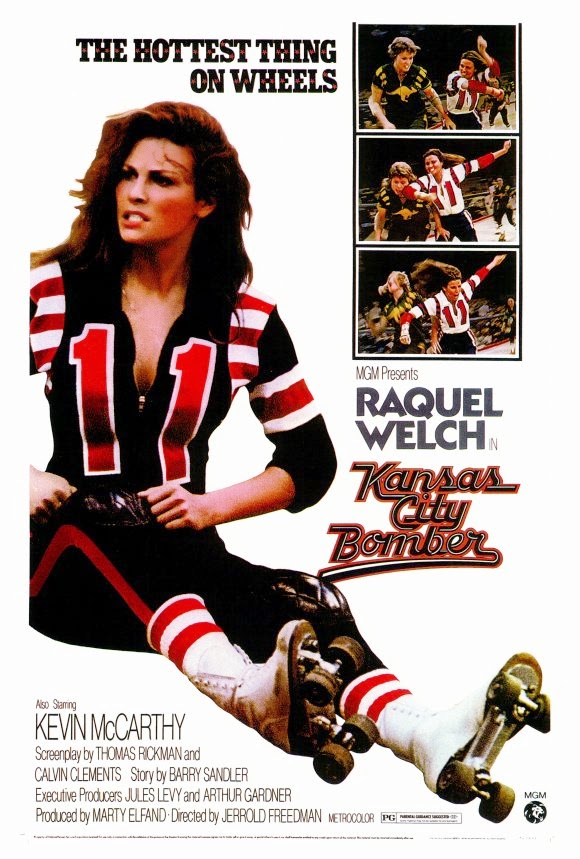
JON ZILLA: Thanks to the amazing 2016 release by Arrow Video, I’ve been loving my introduction to the FEMALE PRISONER SCORPION series, particularly of note for these purposes being JAILHOUSE 41, the one in which franchise hero Nami Matsushima (Maiko Kaji) goes on the run with six other women. These are exploitation films to be sure, since they’re just as prone to ogling the female form as they are to building the myth of the iconic title character. Do I like these movies solely because Scorpion is such a grade-A shitkicker? Or does part of the appeal connect to her being a striking-looking lady?
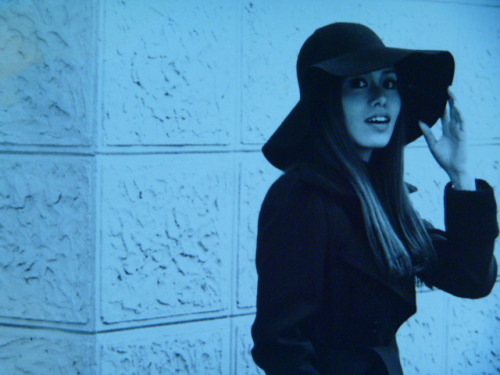
(NOTE: This is Yumiko Katayama, not Meiko Kaji.)
The other titles I came up with in relation to this question were pretty diverse and bizarre, the only common theme being that sort of ambiguous reaction to my own reaction: KANSAS CITY BOMBER, the movie where Raquel Welch becomes a roller derby star. Do I like it because it’s an unusual setting with a vivid protagonist, or do I just like looking at Raquel Welch? …ALL THE MARBLES is a movie where Peter Falk manages a pair of female wrestlers and takes them to a championship win. Again, is it the vivid protagonist thing (both female leads, Vicki Frederick and Laurene Landon, give really fun, lively, occasionally melancholy performances), or is it the lady-wrestling thing? A much more recent movie, RAZE, is about a lethal tournament between imprisoned women, featuring a talented cast including Zoë Bell, Tracie Thoms, Rachel Nichols, and in my favorite performance, a less well-known actor named Rebecca Marshall, who plays one of the nastier antagonists. But again, what are my reasons for enjoying this kind of thing? Would I like the movie as much if they did an “all-male remake?” Only really half-kidding here. Women are more than half the population of this country, but somehow it’s still a novelty when they make up more than half the cast of a genre film. This is a question that spans a couple decades now.
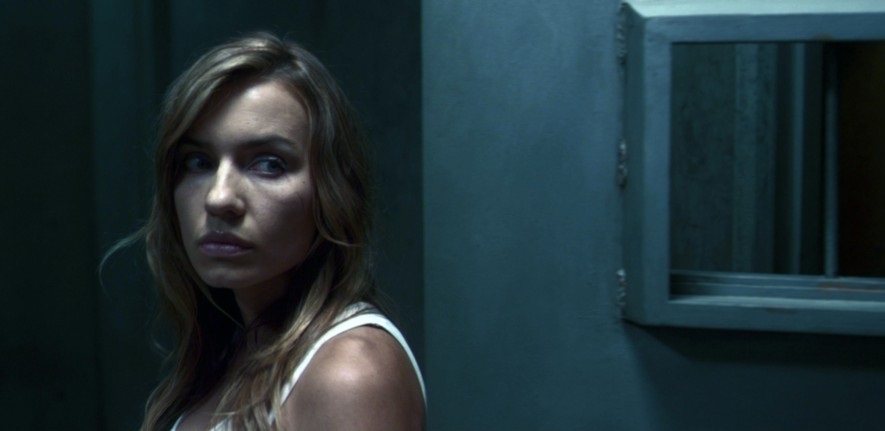
When this question first came up, there was a lot of concern that we’d be struggling to come up with enough list items. That’s a fairly reasonable concern, I think. One thing the deranged controversy over the mostly-female cast of the new GHOSTBUSTERS proves definitively – just as BRIDESMAIDS did five years ago – there just aren’t that many movies that are willing and able to put more than one woman up front. If it’s a romantic comedy, there’s got to be a guy involved. If it’s a superhero movie, she’s not going to get to be the main protagonist, and that’s if she even gets to swing a punch. If it’s a woman-takes-revenge picture like the Pam Grier movies I love so well, it’s usually only the one female hero fighting alone against a cruel world of men.
Quick! Name a movie with an all-male principal cast! Off the top of my head… 12 ANGRY MEN. THE GOOD, THE BAD & THE UGLY. ICE STATION ZEBRA. THE DIRTY DOZEN. EMPEROR OF THE NORTH. THE LONGEST YARD. THE THING. PREDATOR (with respect to Anna). GLENGARRY GLENN ROSS. RESERVOIR DOGS. CRIMSON TIDE. SAVING PRIVATE RYAN. Not so tough to come up with a list, right?
Now name one with an all-female cast. Uh… there’s THE DESCENT… And not to nitpick, but I’m pretty sure most of those monsters are dudes.
It wasn’t always so hard to find examples to fit the bill. Check out the history of the woman’s picture in Hollywood. It used to be a real-deal genre, like superheroes and cartoons about talking animals are today. Studio-era movies like STELLA DALLAS, STAGE DOOR, and POSSESSED were focused around stories about women, starring mostly female stars — it’s not like these movies didn’t have any male cast members, but the thrust of the story being told was of expressly female concern. A valid question to consider would be why weren’t there more female filmmakers in that time, but it is at least true that there used to be many more male filmmakers who were interested in telling women’s stories, or allowed to do so.
In the so-called less-reputable areas of film — the ones I’m way more familiar with — there are plenty of examples of stories filled with female characters, but speaking from the straight male perspective, which is the only one I have to offer, sometimes it’s tough to tell where celebration ends and exploitation begins. For example, in horror movies, there are all kinds of examples of stories populated primarily by women. In BLACK CHRISTMAS and HALLOWEEN and so many more slashers to follow, the majority of the protagonists are young women, with roles for men falling to boyfriends, authority figures, and terrifying hulkish murderers. Since so many slashers are written and directed by male filmmakers, we can fairly debate the motivations there, as many people have. Giallo films frequently have female protagonists, but the genre is so lurid by design that femininity is often there largely for the beauty aspect, just one more visual element for the palette. The movies of Dario Argento are interesting because he seems to be a male filmmaker straining to figure out women — his better films give the feeling he’s genuinely interested in their female characters, though again we can talk all day about the frequent weirdness and possible running-off-the-rails nature of Argento’s treatment of women. SUSPIRIA and PHENOMENA are particularly intriguing in that context.
It’s also worth noting that a few of our most beloved female genre-film icons — I’m thinking primarily of Ripley in ALIEN here, an incredibly influential female role originally written as a man — started out as gender-swaps. My point is that many women-driven star vehicles — or ensemble vehicles — as uncommon as they are, are still frequently envisioned by men, for whatever reasons, and sometimes they’re not even initially envisioned that way. And as a frequent consumer and much-less-frequent engineer of these kinds of stories, I believe I have to look at my own role. I like to think I’m always on the side of equality and empowerment, but we all know how complicated life can get when human beings are involved, particularly when we’re talking about male human beings and the way they look at female human beings.

JAMIE RIGHETTI: When I think of the film that had the most profound impact on me as a young girl, I inevitably turn to A LEAGUE OF THEIR OWN (1992). The Penny Marshall directed movie follows two small-town sisters, Dottie (Geena Davis) and Kit (Lori Petty), who join the All-American Girls Professional Baseball League, which took over America’s pastime during World War II. The film is highly quotable and memorable: Jimmy Dugan (Tom Hanks) with a lip full of dip incredulously insisting that there’s no crying in baseball; Marla Hooch (Megan Cavanagh) falling in love and singing It Had to Be You; Madonna’s All The Way Mae going to confession and making a priest swear, her raucous swing dancing and advocating literacy through pulp novels; Kit getting traded and bare-handing a baseball at her sister; the collision at the plate and the ball rolling out of Dottie’s dirty palm. But A LEAGUE OF THEIR OWN is so much more than this because at its core, it’s a story about how important women are.
I still cry at the final sequence, as the women walk through the hallowed halls of Cooperstown, completely in awe that their accomplishments, but most of all their IMPORTANCE, has been forever enshrined alongside the men whose names we’ll always remember first. But we need to remember their names; we need to remember that these women were real and their accomplishments weren’t just inspiring. The women of the All-American Girls Professional Baseball League sent a message to America that women weren’t only housewives or mothers or even just baseball players, but that we are capable of so much if we are given the chance to step up to the plate.
I can’t stress the importance and need for more films like A LEAGUE OF THEIR OWN. Films directed by, written by, produced by AND starring women. Films that gives us female characters that are complicated but not stereotypes, films where women are allowed to be the hero, where women can cherish love and even marriage without it being the end all be all of their existence, films where women can revel in their sexuality, while still sorting out the complications and frustrations that come with being reduced to objectification.
A LEAGUE OF THEIR OWN is what happens when women are finally allowed to tell their own stories and I look forward to the day when this is no longer an anomaly. And as we sift though the bitter ashes of misogynistic disappointment following the success of an all-female GHOSTBUSTERS (2016), it’s clear once again: representation matters. And so, batter up, hear that call….

- [THE BIG QUESTION] WHAT’S YOUR FAVORITE FEMALE ENSEMBLE IN MOVIES? - July 22, 2016
- [IN THEATERS NOW] THE BOY (2016) - January 24, 2016
- Cult Movie Mania Releases Lucio Fulci Limited Edition VHS Sets - January 5, 2016
Tags: Ladies, Life, politics, The Big Question, women


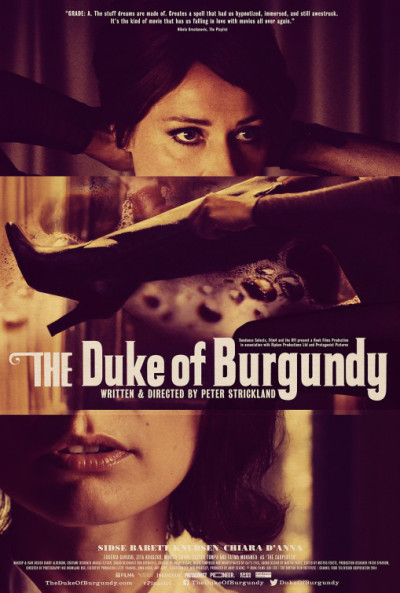
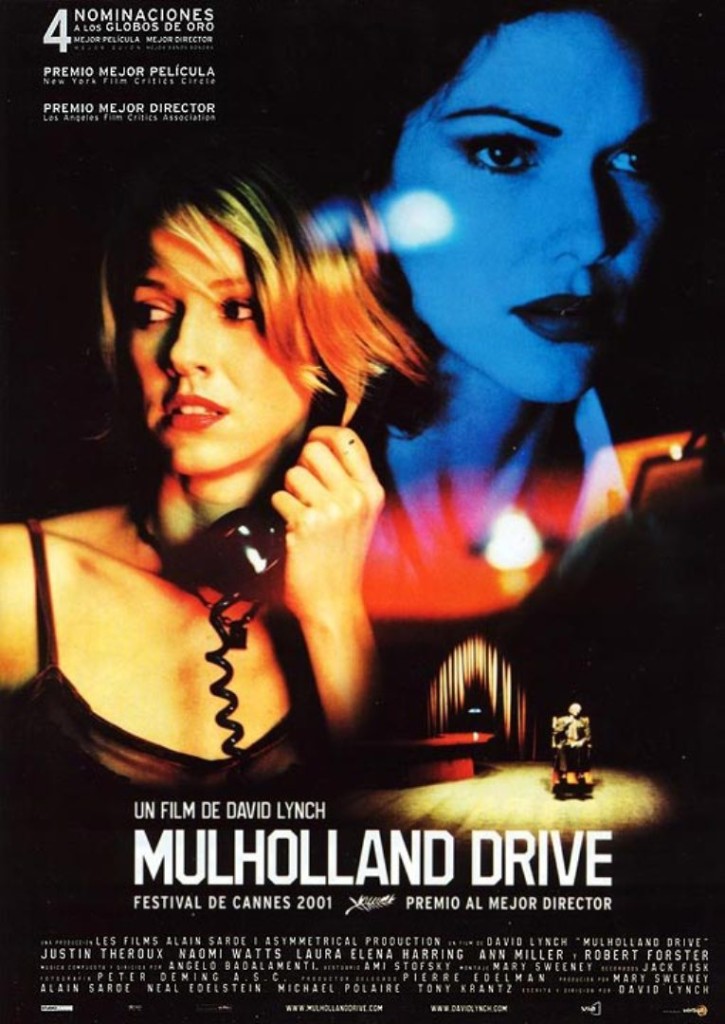




No Comments